The team will soon be experimenting with a different kind of camping, Hot Tent Camping. Don’t worry, we aren’t planning on restarting the Carry On… franchise. Hot tent camping involves the use of a stove to provide warmth to the tent in particularly cold conditions. It is most often used for semi permanent setups in permanently cold conditions such as way up in North Canada. In these types of setups, specialist equipment is absolutely essential, eh. Amongst such equipment is typically a large and predictably heavy log burning stove.
We’re not a group to go spending money on expensive equipment where it isn’t warranted, especially if it’s for some crackpot idea that might only be a one time use. So, we went about making our own prototype, of sorts.
The product spec was simple: up-cycle materials to make a small, lightweight, portable log burning stove with a chimney which can be attached to a hole in the camping canopy. We got thinking, what would be a good size item for the main chamber? We needed to find something which could take the heat of a 250°C fire, was fairly light and just the right size; not too big, not too small. Our solution was found in another one of the team’s shared hobbies, drinking beer.
Many supermarkets and microbreweries sell mini kegs which hold around 5 litres of beer. We wagered that one of these would be ideal as the starting point and first building block for our lightweight stove.
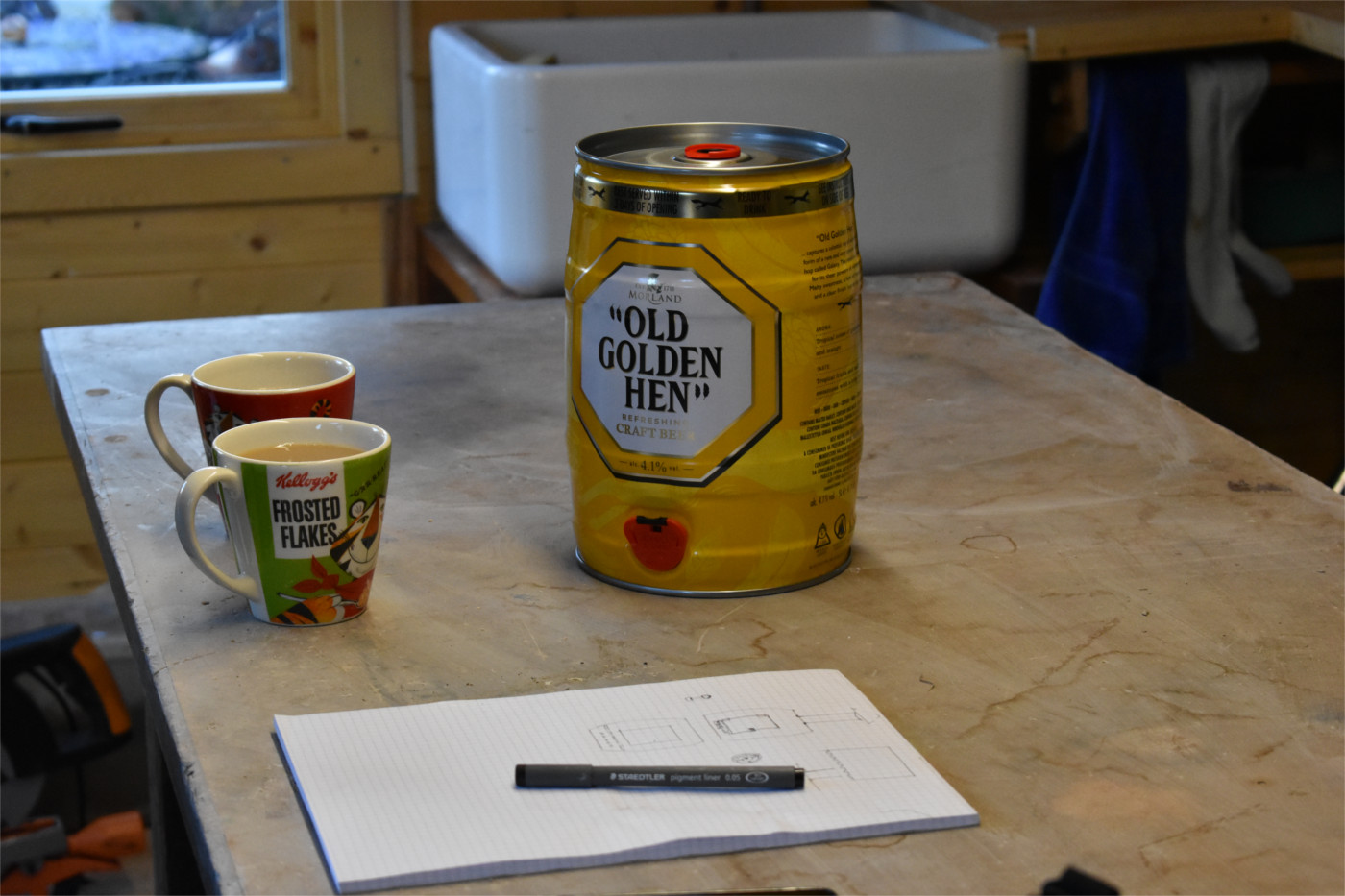
With a plethora of spare materials and some roughly sketched plans we would have promptly begun construction, except for one small problem. Our mini beer keg was still full of beer. Fortunately, with the help of my dad (whom was kindly providing use of workshop and many provisions), that issue was swiftly resolved.

First, we needed to make a hole in the top of the keg to make room for a chimney. Looking at the wide selection of tools available to us we chose our weapon and quickly found that the stainless steel keg cut like butter at the hands of most sharp edges, especially a quickly oscillating jigsaw blade. After drilling several pilot holes we cut an opening in the top and folded in the lips. Following our theme of a low budget scrapheap challenge, we then inserted our next part, an old baked bean can for the chimney. After some gentle coercion this fit as snug as a bug in a rug.
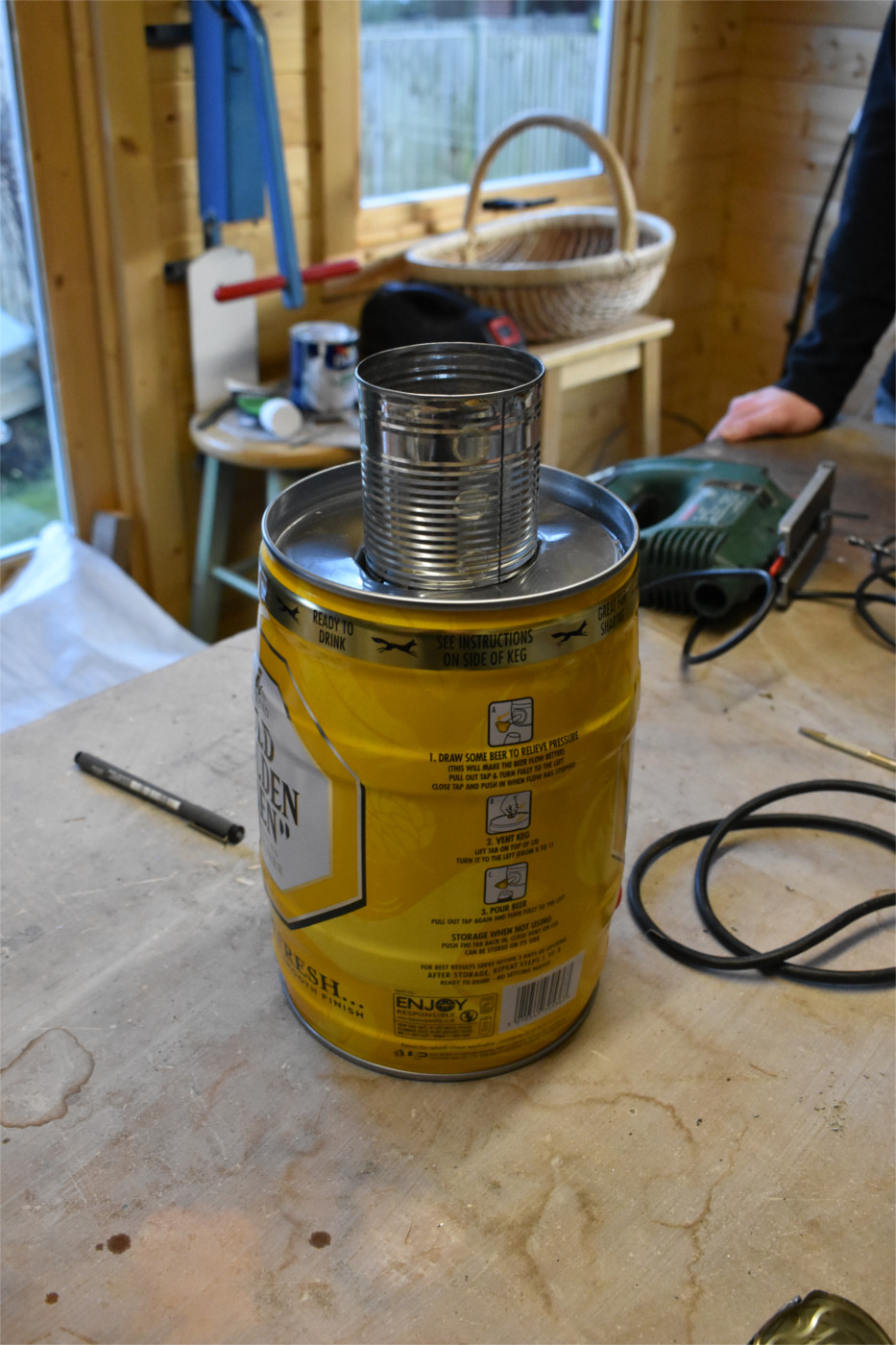
Next, we needed to cut a hole and make some kind of door mechanism which would be simple to make but also easy to place and remove when the stove is burning away. The team sketched up a few different ideas and eventually settled upon the idea of placing a door, consisting of an appropriately shaped piece of sheet aluminium, on a small lip at the top of an opening.
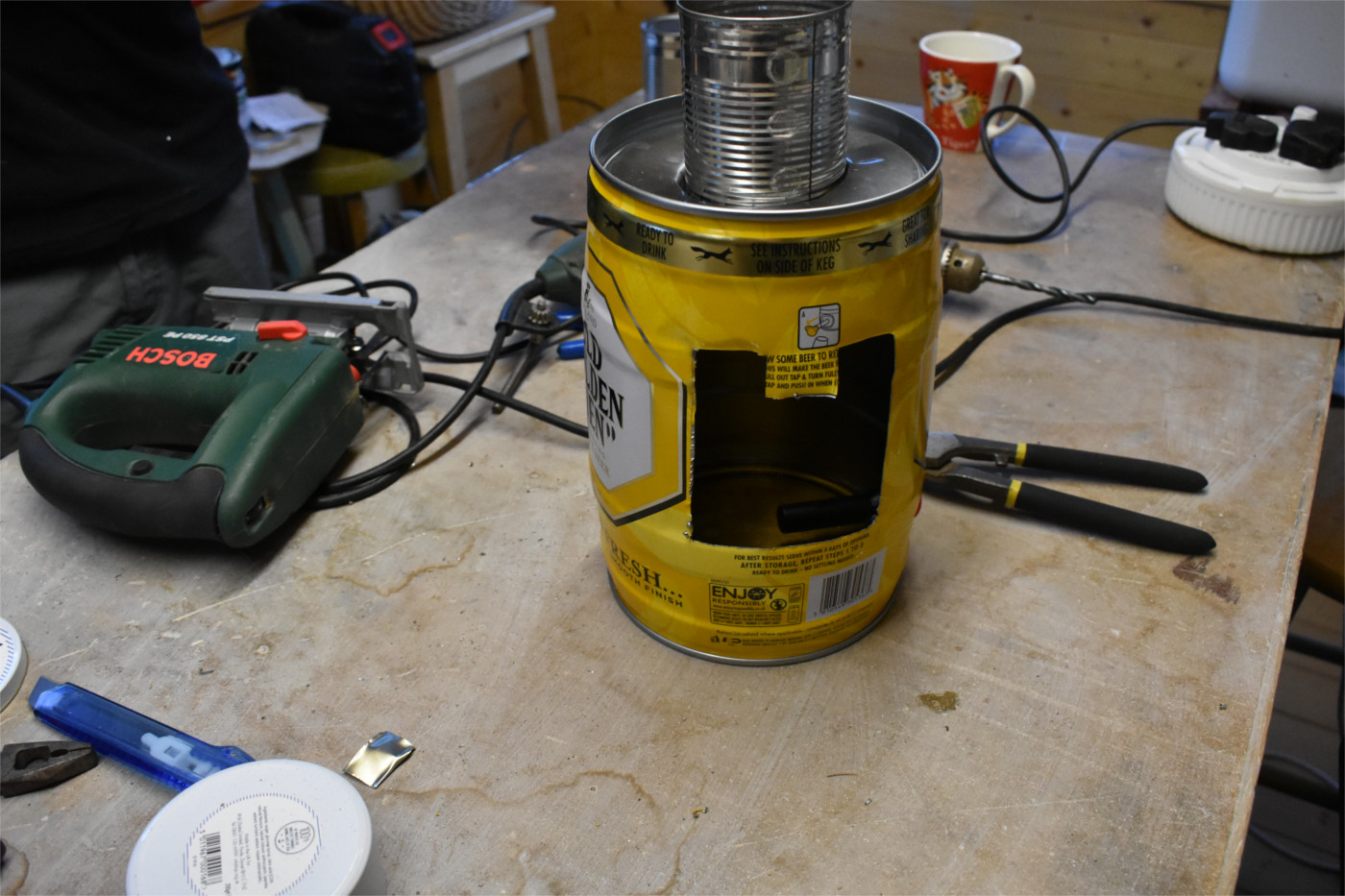
We then gutted the belly of the beast, drilling out the dispenser nozzle and several ventilation holes around the bottom, which would hopefully provide some draw of air. We also cut out the aluminum door and attached some wire to act as hook. Finally we cut out and bent some strips of aluminium to act as stage to hold the firewood above the bottom of the keg.
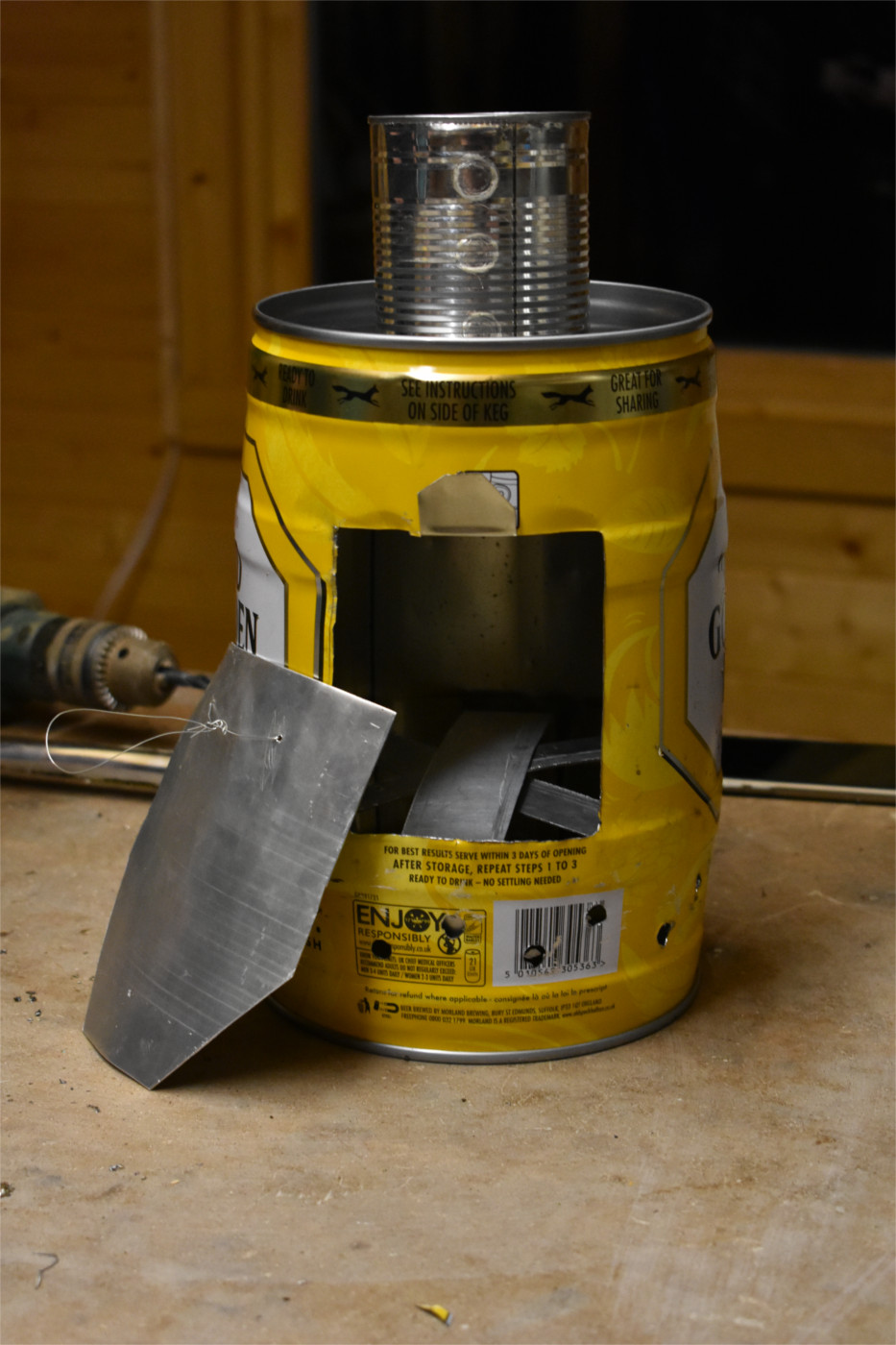
I swear that whenever the Boldly Goes team gets together, we end up making a fire; this occasion was no exception. We loaded the mini-keg stove with paper and kindling, lit the fire and put on the door. Within a minute the fire was roaring and an impressive draw was pulling the flame out the top of the old baked bean can chimney. We kept adding more kindling to the fire and quickly found that we had made a very hungry little stove indeed; it will tear through its maximum capacity of kindling in about five minutes flat. After which, the stove is quickly cool to the touch.
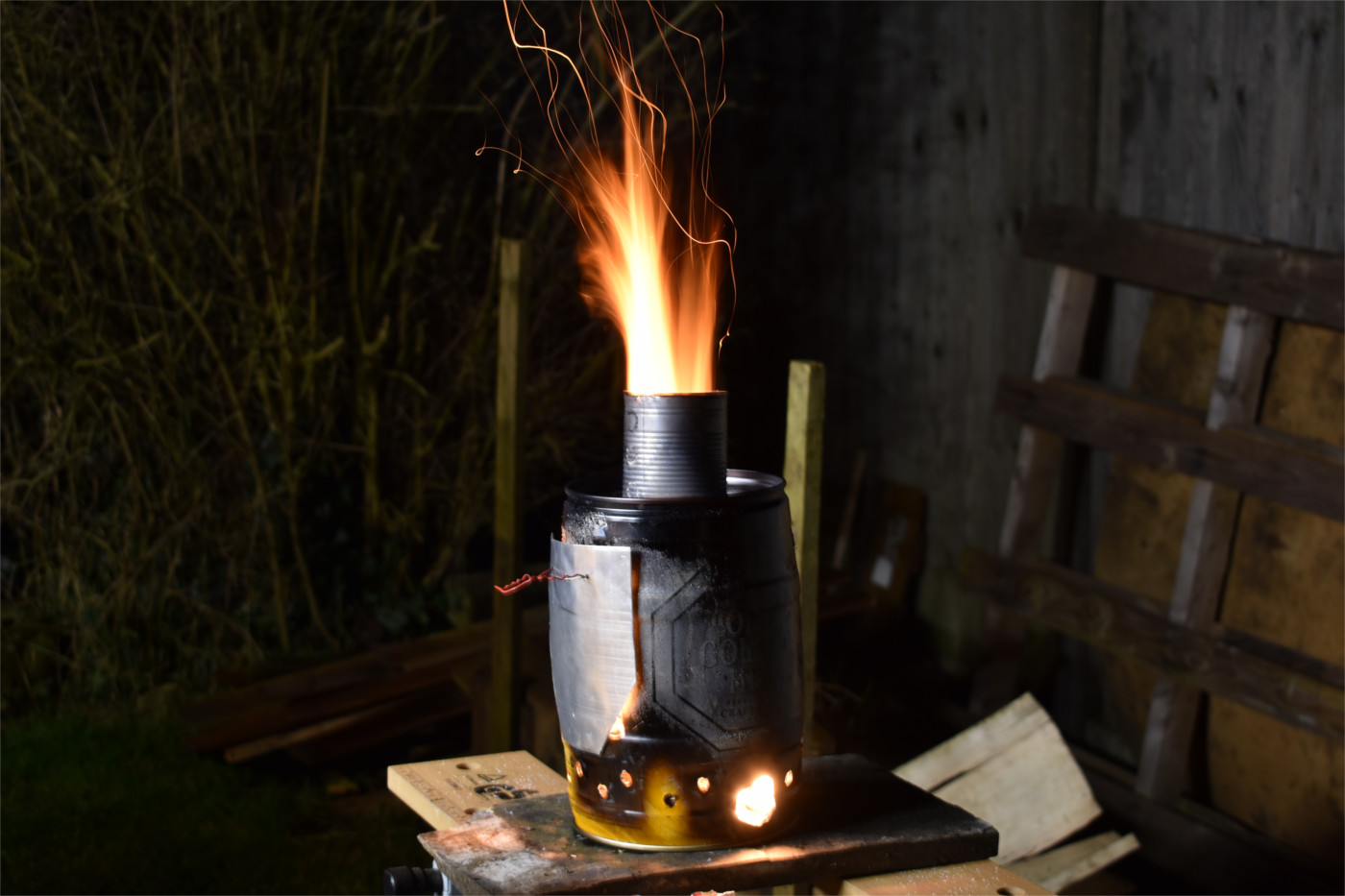
We burnt the stove for about 20 minutes in an attempt to burn off any of the paint or surface finishes on the keg which may produce noxious fumes. Investigating the state of the stove after it had cooled down we’d found that it had adopted a rustic blackened tinge inside and out. We also found that our aluminum fire stage inside had not survived the intense heat of the fire and had curled away to a thin wisp. Considering our creation and testing fairly successful, we’re now ready to incorporate this into a hot tent setup.